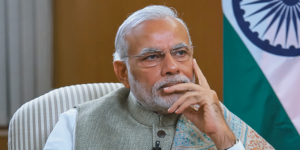The third version of the web promises the users to become the ‘(part)owners’ of the internet and own their data, information, creations and transactions
Domain penetration in the United States is about 43% whereas it is 0.6% in India
The first step to Web 3.0 is decentralization – not on the blockchain, but on Web 2.0

The world is evolving and so is the internet. Unless you are living under a rock on a deserted island, you would have heard that the internet is moving to Web 3.0 – the third version of the world wide web.
Simply put, the third version of the web promises the users to become the ‘(part)owners’ of the internet and own their data, information, creations and transactions rather than be dependent on a bunch of big technology firms collectively called ‘The Big Tech’.
Additionally, the users can fund themselves by accepting payments (and pre-payments) from their customers and patrons which will reduce the dependence on investors and banking institutions. The third version of the web promises to bring the creators into focus by controlling and converting their online addresses into a wallet and high-security safe box.
Personally, I think that there is no way the world can escape Web 3.0. Sooner or later, the Web 2.0 properties (build), communications, warehousing and transactions will move to Web 3.0. While all this might sound very exciting and promising, there are challenges. Challenges that span global, local, technological and when it comes to India – cultural as well.
Let’s talk about India. There are 750 million internet users in India and 5 million web domains are owned by Indians. In comparison, there are slightly more than 300 million internet users in the United States. There are 130 million web domains owned by Americans.
The number of domains owned by a country divided by the number of internet users is called the domain penetration in the country. Currently, domain penetration in the United States is about 43% while in India, it is 0.6%. By all standards, that’s a bleak situation to be in when it comes to ‘online’ presence. For if domain penetration is low for Web 2.0, by estimation it will be much lower for Web 3.0.
Why Is The Domain Penetration So Low In India?
Most of the internet users in India are ‘consumers’ of content. Many have become ‘creators’ thanks to apps like Instagram Reels etc, but this has been majorly limited to creative arts. Businesses still have a long way to go when it comes to figuring out how to use the internet to let the world know what they are up to.
Less than two per cent of business units in India employ 10 or more workers. Most of these businesses do not have an in-house IT team to build and manage websites. With a large majority not understanding the complexities involved in building and maintaining a website, they outsource the job to external parties who are often unreliable. So not many businesses attempt to get ‘online’ via their own websites. And those who do, make a half-hearted attempt.
Another factor is that the per capita income of an average American is ten times that of an average Indian. The cost of acquiring a domain, getting hosting and building a website is almost the same for the two. So, an internet user in the United States is much more likely to acquire a domain and build a website than an Indian – individual or business.
The entire operation of building a website looks like an expense rather than an investment when the above-combined factors are considered. Indians love cutting expenses and there goes the ‘expense’ of building, owning and maintaining a website.
In such a scenario where the businesses don’t have access to domain and hosting knowledge, it is unjust to expect the users to understand and adopt Web 3.0 concepts such as blockchain and smart contracts.
What Do The Users Want?
They want a place online to display and promote what they offer (services or products), generate leads and manage communication. Furthermore, the users would value this online space more if it can be created and managed without depending on a third party.
Thus, the first step to Web 3.0 is decentralisation – not on the blockchain, but on Web 2.0. A place where the user has access to and control of their domain and website content. Where the user can make changes to any content on the website as and when required without any dependency on another team. Once this is achieved, transitioning the users onto Web 3.0 will be a much easier feat.









![Read more about the article [Funding alert] G.O.A.T Brand raises $36M in Series A led by Tiger Global, Flipkart Ventures](https://blog.digitalsevaa.com/wp-content/uploads/2021/07/G-1627282108213-300x150.png)
